We’re taking this outdated pine dresser and giving it a new look with just a few simple steps. We’re going to show you how to prep your piece for painting properly, show you when to prime for Fusion Mineral Paint and how to prime and block wood bleed-through and those knots from showing through!
How To Prep A Pine Dresser
- Products Used
- TSP
- BIN Shellac blocker for knots and wood bleed-through.
- RollerBrush
- Lamp White
- Stain and Finishing Oil
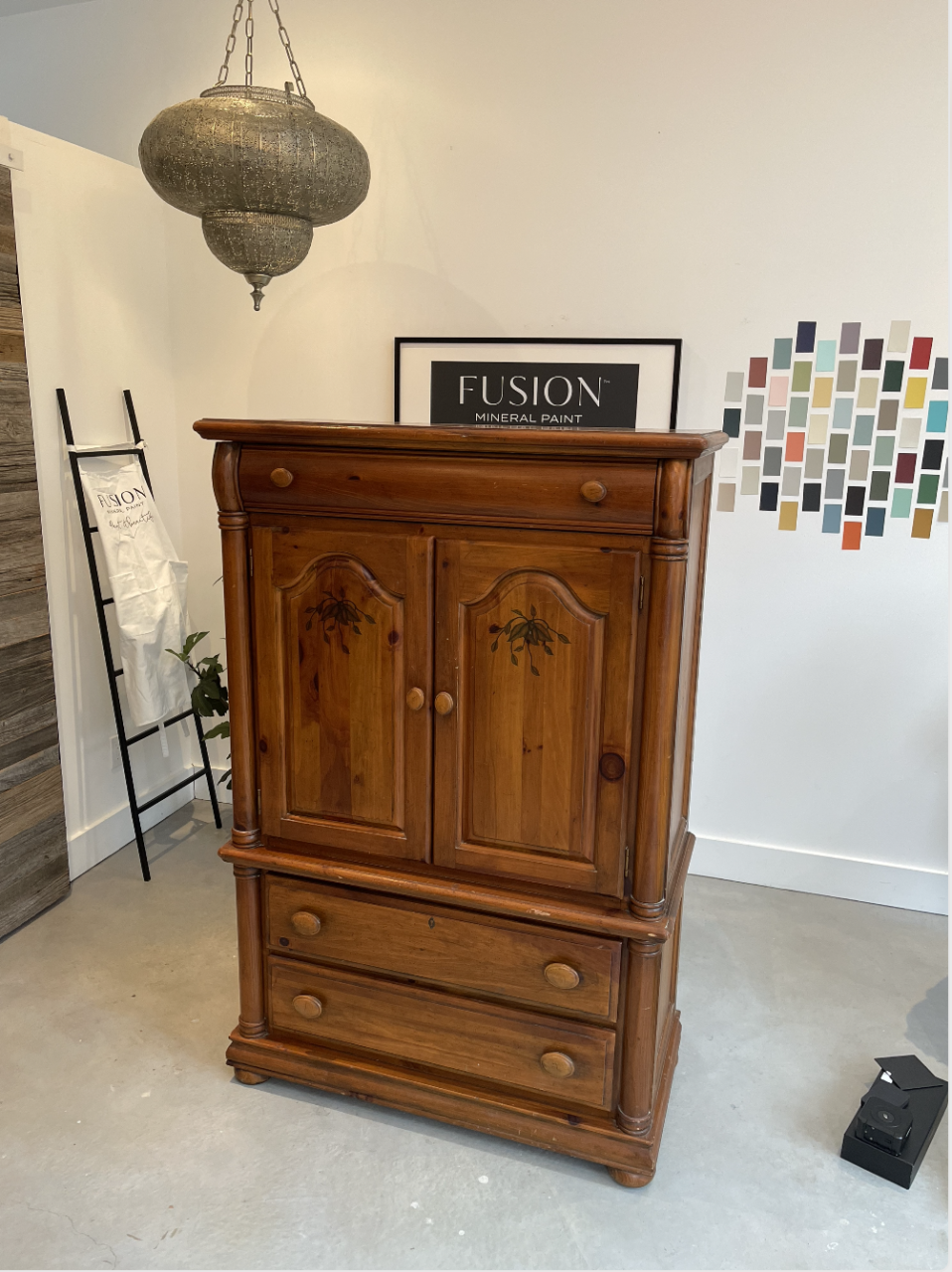
This piece was dirty, you could smell the nicotine on it. It needed a good cleaning! We used a little bit of elbow grease with this. Scrub with the green scrub pad and then wipe back with a clean cloth. Rinse off with the water and change the water as needed. All you need is 2 capfuls of our TSP Alternative into a litre of water to make an eco-friendly biodegradable grease-cutting cleaning solution. Clean until your rag is no longer dirty looking.
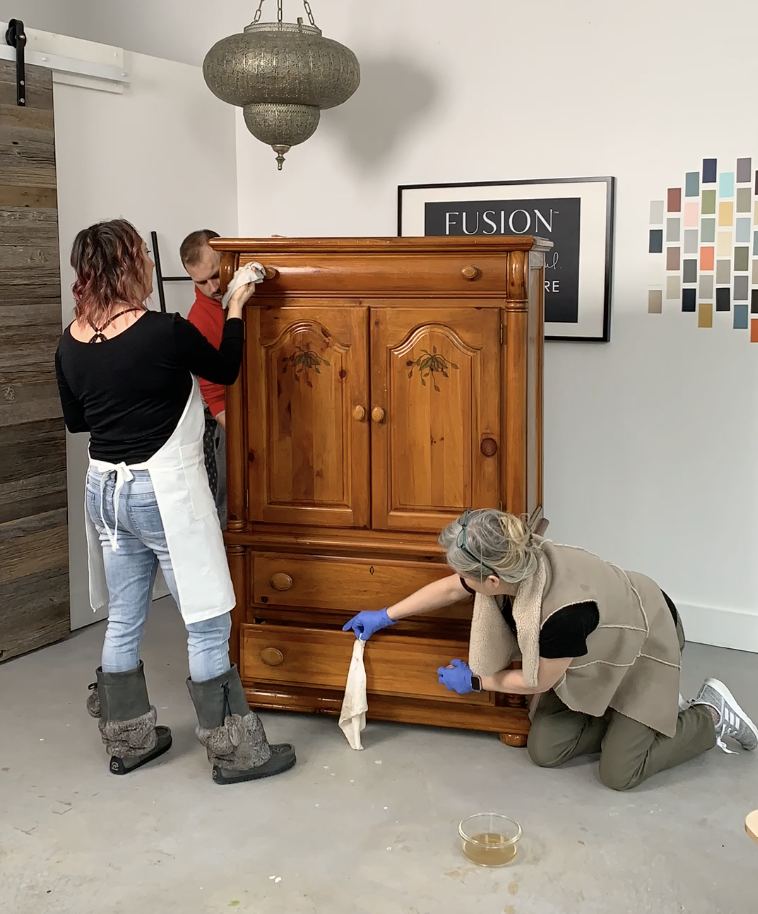
When to prime using Fusion Mineral Paint
One of the most common questions we get here at Fusion is how you stop wood bleeding through and block the knots and tannins from coming through the paint. The other is when to prime your furniture.
Fusion Mineral Paint has a built-in primer for most surfaces, however, if you’ve got a piece with knots or a type of wood known for bleed-through like Cherry, Oak or Mahogany, you’ll want to add a stain blocker like BIN Shellac primer to prevent the knots from bleeding through your paint finish.
There is often much confusion as to when you would need a primer when painting furniture, and the answer is 99% of the time you do not need one. Fusion™ Mineral Paint is self-priming as is.
2 Reasons To Prime
There are only 2 reasons you would need to prime before using Fusion™ Mineral Paint
1. To stop bleed-through
2. To help with adhesion.
Bleed Through & Wood Tannins
For wood bleed through you would need to use a stain-blocking primer with a shellac base. We recommend BIN Shellac primer.
Top Tips for Using BIN Shellac Primer
- Make sure that it’s applied in a thin layer, very quickly (using a roller is great, especially on larger flat surfaces) because this product dries quickly
- If any texture was made from the primer, give it a light sanding before applying the second coat of primer
- We encourage only using this product in a well-ventilated area (these products have solvents that are highly volatile, which is why they dry so quickly)
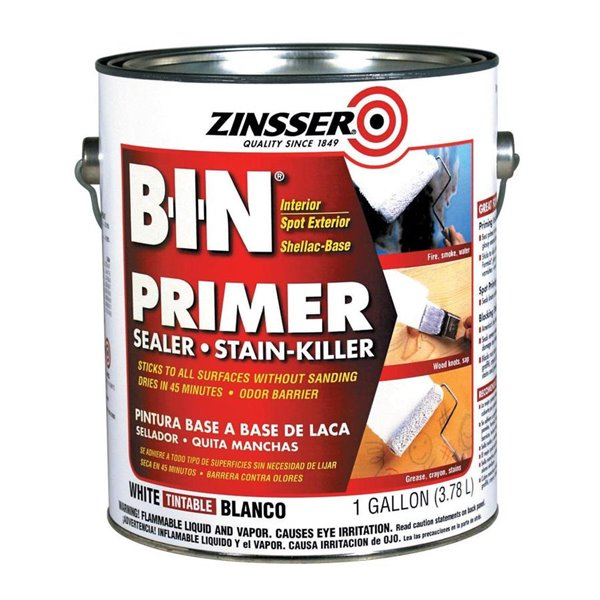
If your piece doesn’t have exposed knots or one of the common bleeding woods, then you don’t need a primer. Most pieces of furniture just need a quick clean with TSP alternative, and then paint. Following these steps will ensure that your furniture piece will hold up perfectly.
Adhesion issues
The second reason you may need a primer when using Fusion is for adhesion. If you are painting a high gloss slick shiny surface you would use Ultra Grip this is a primer on steroids so to speak. It makes painting the impossible, possible. But it is a much more eco-friendly version than our friend BIN Shellac. Melamine and Thormafoil are the 2 main surfaces that you would need to use Ultra Grip on, other than that, just a good cleaning and following the proper prep steps.
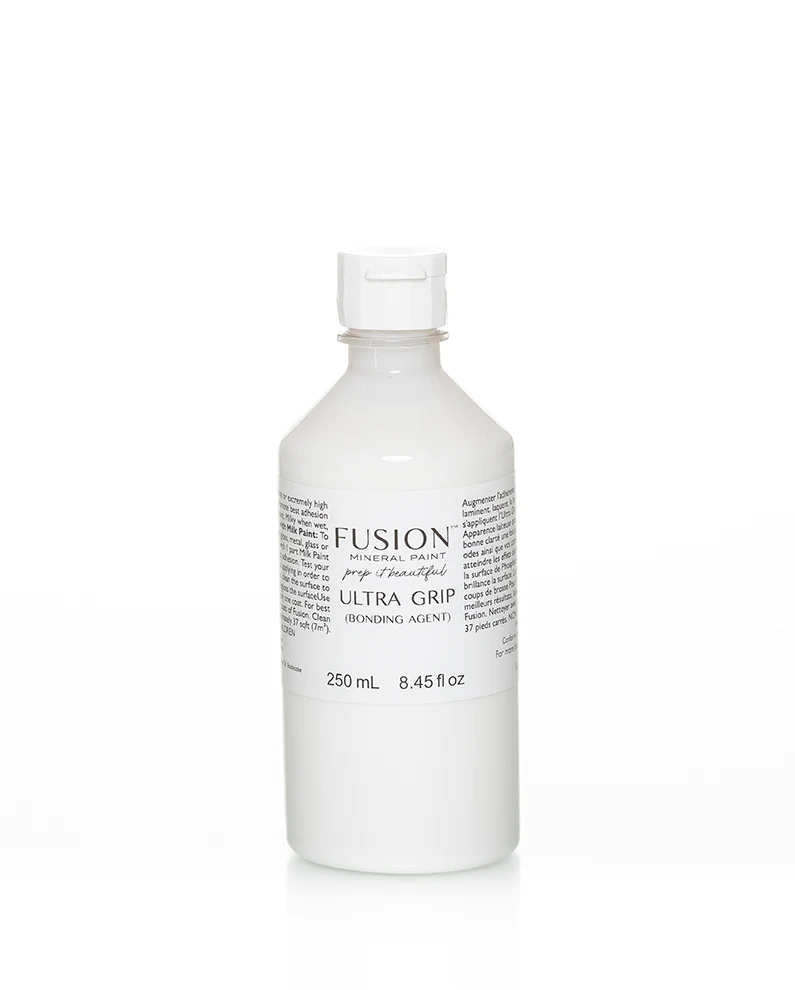
How do I know if I need Ultra Grip?
Great question! Following our Prep card will give you a good indication of it you need Ultra Grip or not. Another indication of you needing our adhesion primer is when you get ‘lacing’. This is when the paint separates and leaves holes. In this circumstance, you would need to wipe back the paint (or let it dry, and scuff sand ) then apply one maybe 2 coats of Ultra Grip. This will ensure great adhesion.
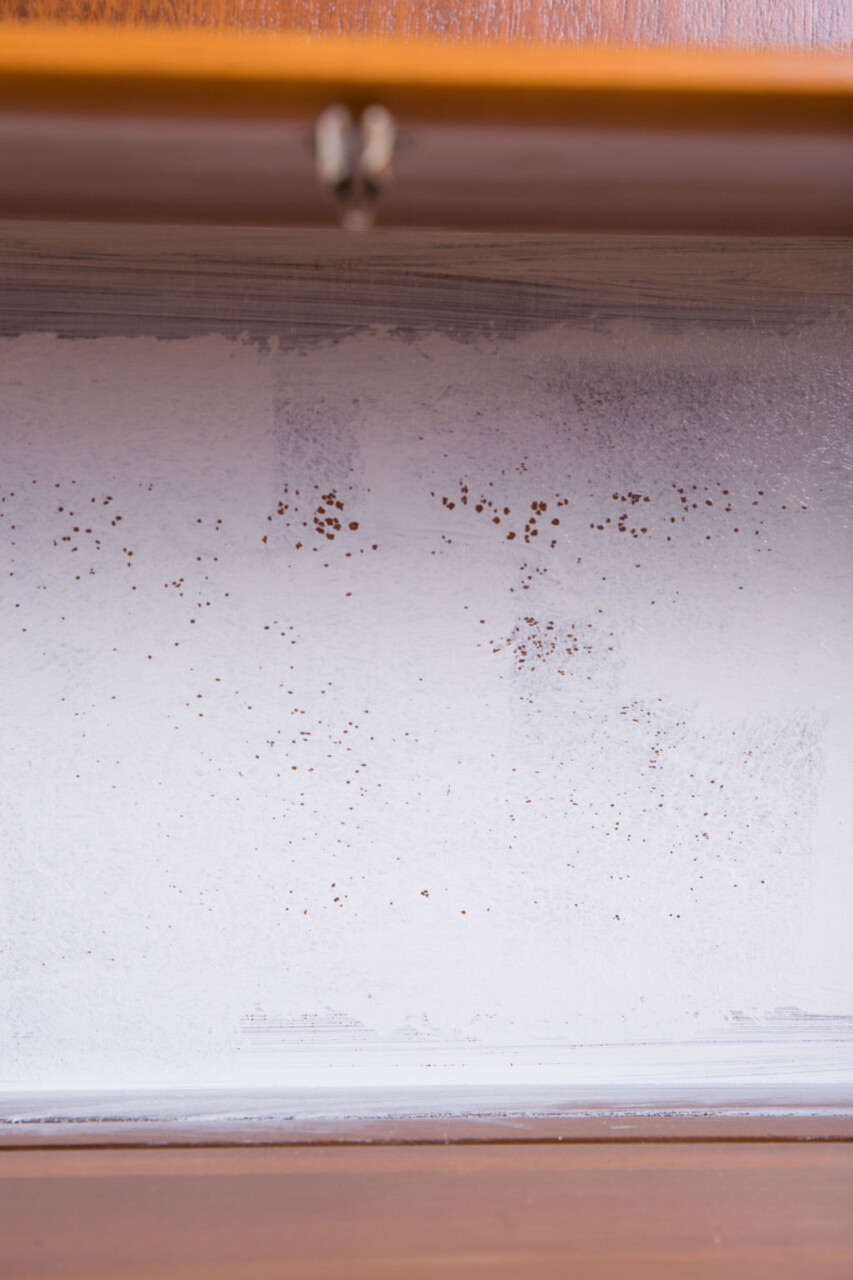
Proper Furniture Prep
1. Clean your piece with TSP Alternative
2. Ensure there is no wax, if so remove with Odourless Solvent
3. A light sanding for any high gloss areas, then paint!
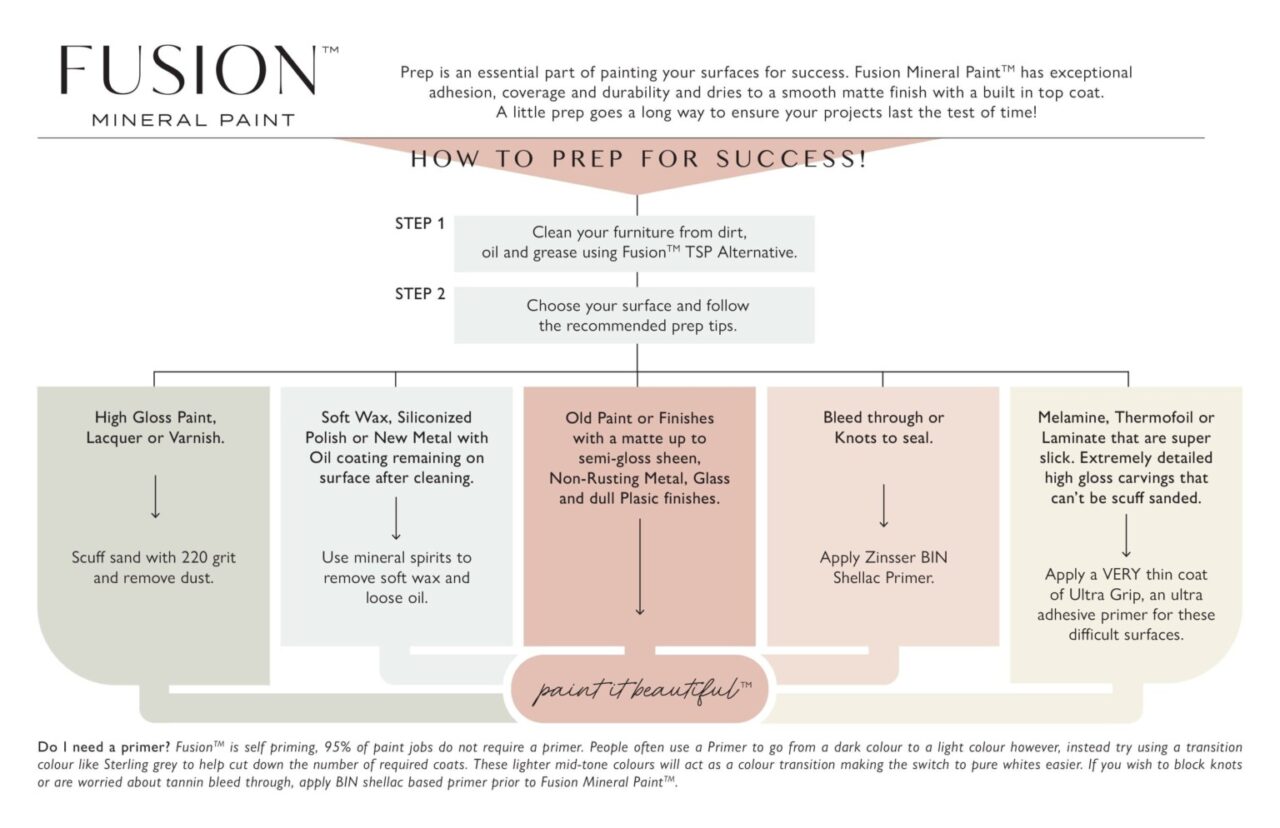
How To Use A Roller To Paint Furniture
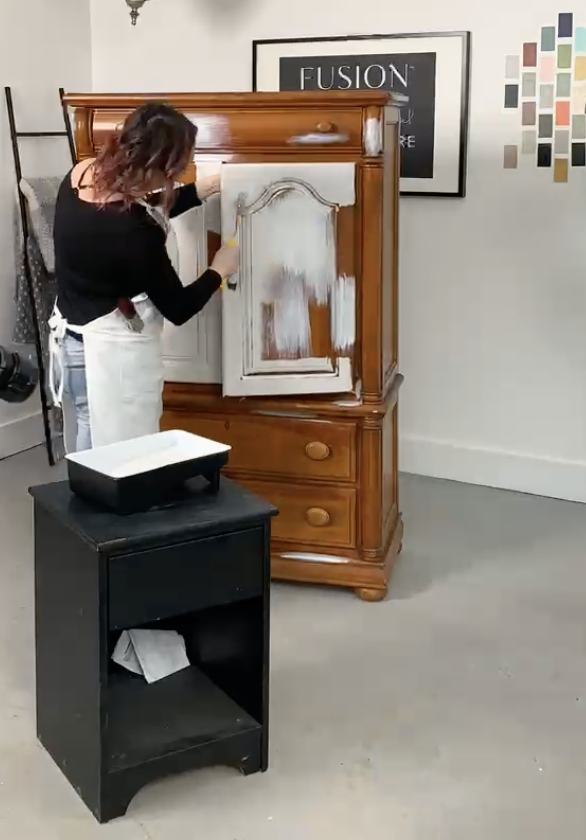
For larger surface areas a roller is great for getting your paint on without it drying too quickly. ( You could also add some Extender see here )
Get your roller saturated but not dripping, often when rolling you can get the orange peel look, this is usually due to too much paint on your roller. Cover the area in good long strokes for overall even coverage. A few thin coats are much better than heavy coats and will avoid uneven coverage and the dreaded orange peel/ textured look.



